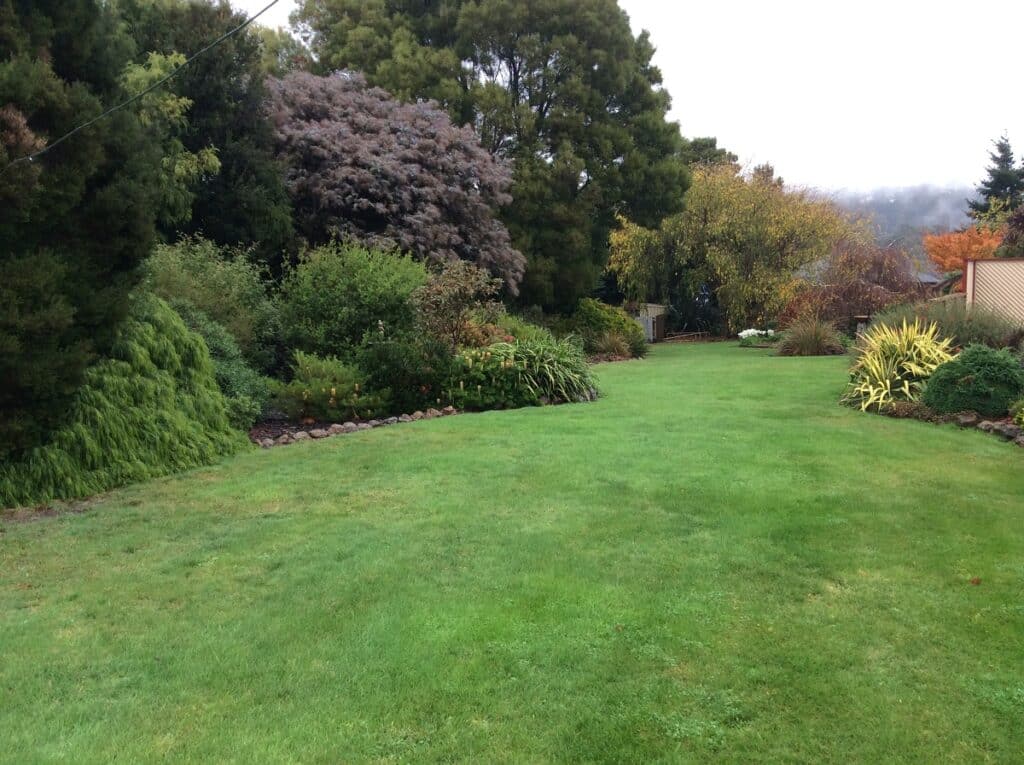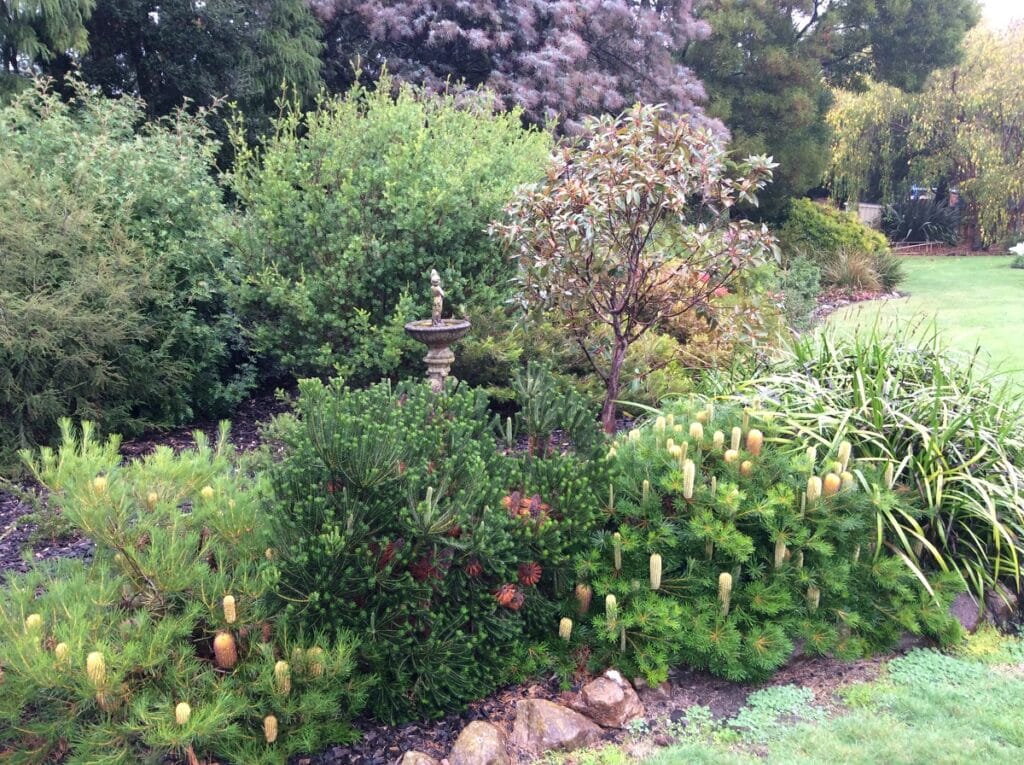Anne Heinrich and Harold Ralston are the owners of Euphrasia, a property situated in West Ulverstone, approximately 20km west of Devonport, Tasmania. The property is a house block featuring native and introduced trees and shrubs, and it is Anne and Harold’s intent to live there whilst maintaining and regenerating the gardens to create a small wildlife refuge.
The property covers approximately 0.4 hectares of native and introduced flora. Australian blackwood (Acacia melanoxylon) is the sole original native species, however the owners intend to introduce more natives to create habitat for local wildlife. Currently introduced species include banksias, grevilleas, teatrees, boronias, correas, kunzias, eucalypts, acacias, melaleuca, callistemons, dianellas, Pomaderris elliptica, Leucopogon parviflorus, Diplarrena latifolia, Orthrosanthus multiflorus, Nothofagus cunninghamii and Epacris impressa.
A wide range of native species has been seen on the property including eastern barred (Perameles gunnii) and southern brown (Isoodon obesulus) bandicoots, Tasmanian pademelons (Thylogale billardierii), mountain dragons (Rankinia diemensis), blotched bluetongue lizards (Tiliqua nigrolutea), Ewin’s tree frogs (Litoria ewingii) and a range of skinks.
Birdlife is very abundant and includes white-bellied sea eagles (Haliaeetus leucogaster), brown falcons (Falco berigora), Australian hobbies (Falco longipennis), brown goshawks (Accipiter fasciatus), laughing kookaburras (Dacelo novaeguineae), southern boobooks (Ninox boobook), silver gulls (Chroicocephalus novaehollandiae), shining (Chrysococcyx lucidus) and Horsfield’s (Chrysococcyx basalis) bronze cuckoos, fantail (Cacomantis flabelliformis) cuckoos, grey butcherbirds (Cracticus torquatus), ravens (Corvus coronoides), golden whistlers (Pachycephala pectoralis), black-faced cuckoo-shrikes (Coracina novaehollandiae), European goldfinches (Carduelis carduelis) and European greenfinches (Chloris chloris).
Also present are superb fairy-wrens (Malurus cyaneus), house sparrows (Passer domesticus), common blackbirds (Turdus merula), welcome swallows (Hirundo neoxena), striated pardalotes (Pardalotus striatus), brown thornbills (Acanthiza pusilla), yellow (Anthochaera paradoxa) and little (Anthochaera chrysoptera) wattlebirds, eastern spinebills (Acanthorhynchus tenuirostris), Tasmanian scrubwrens (Sericornis humilis), scarlet (Petroica boodang) and dusky (Melanodryas vittata) robins, dusky woodswallows (Artamus cyanopterus), beautiful firetails (Stagonopleura bella), Richard’s pipits (Anthus richardi), New Holland (Phylidonyris novaehollandiae) and strong-billed (Melithreptus validirostris) honeyeaters, masked lapwings (Vanellus miles), grey fantails (Rhipidura albiscapa), yellow-throated (Lichenostomus flavicollis) and crescent (Phylidonyris pyrrhopterus) honeyeaters, yellow (Anthochaera paradoxa) and little (Anthochaera chrysoptera) wattlebirds and grey shrike-thrushes (Colluricincla harmonica).
Parrots such as yellow-tailed black cockatoos (Calyptorhynchus funereus), galahs (Eolophus roseicapilla), rainbow lorikeets (Trichoglossus moluccanus) and green rosellas (Platycercus caledonicus) are also present.




